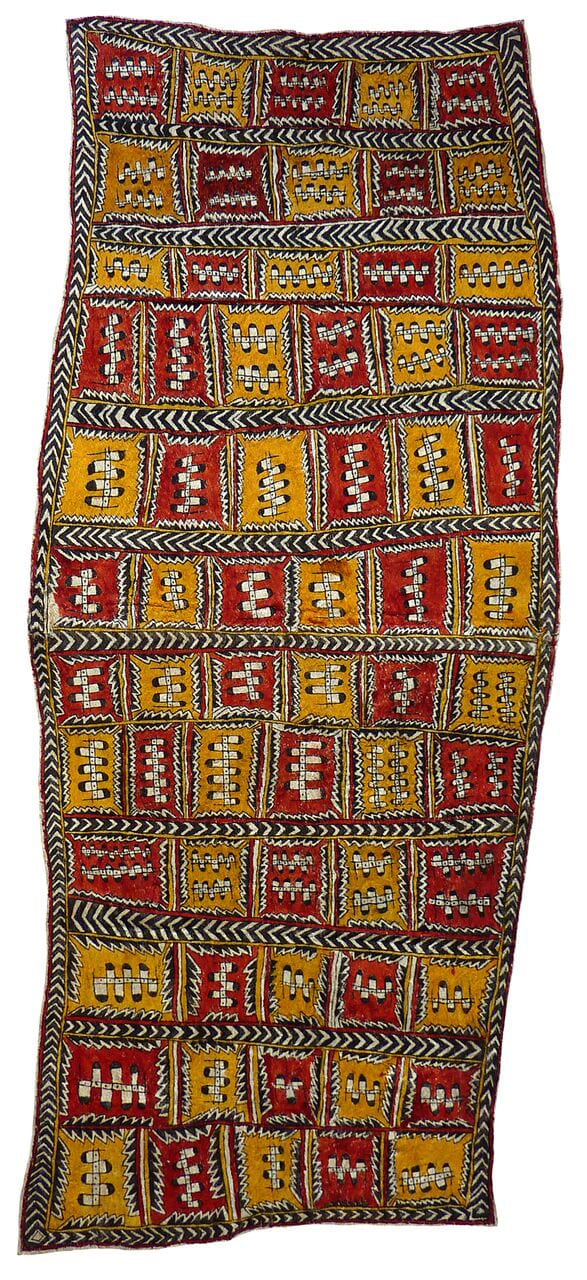Mionomehi Oriseegé (Ancestral Paths): Barkcloth from Omie
Past exhibition
Diona Jonevari (Suwarari) Papua NewGuinean, b. 1978
Ovi ovi’e, dahoru’e ohu’o buborian o’e
natural pigments on nioge (barkcloth)
148 x 63 cm
832035
Eel with black & yellow spots, Omie mountains and beaks of the Papuan Hornbill. This design is called ovi ovi'e and represents an eel with black and yellow spots found...
Eel with black & yellow spots, Omie mountains and beaks of the Papuan Hornbill.
This design is called ovi ovi'e and represents an eel with black and yellow spots found in the rivers of Omie territory. Diona explains that this particular eel is not eaten by Omie people. The lines that run through the work are known as orriseege or pathways and provide a compositional framework for the designs. The border design within each frame is composed of two designs - the triangles are dahoru'e, Omie mountains and the zig-zag design over the triangles is bubqoriano'e, the beaks of the Papuan Hornbill. Hornbills are the largest flying birds that can be found in the Omie mountains.
This design is called ovi ovi'e and represents an eel with black and yellow spots found in the rivers of Omie territory. Diona explains that this particular eel is not eaten by Omie people. The lines that run through the work are known as orriseege or pathways and provide a compositional framework for the designs. The border design within each frame is composed of two designs - the triangles are dahoru'e, Omie mountains and the zig-zag design over the triangles is bubqoriano'e, the beaks of the Papuan Hornbill. Hornbills are the largest flying birds that can be found in the Omie mountains.
